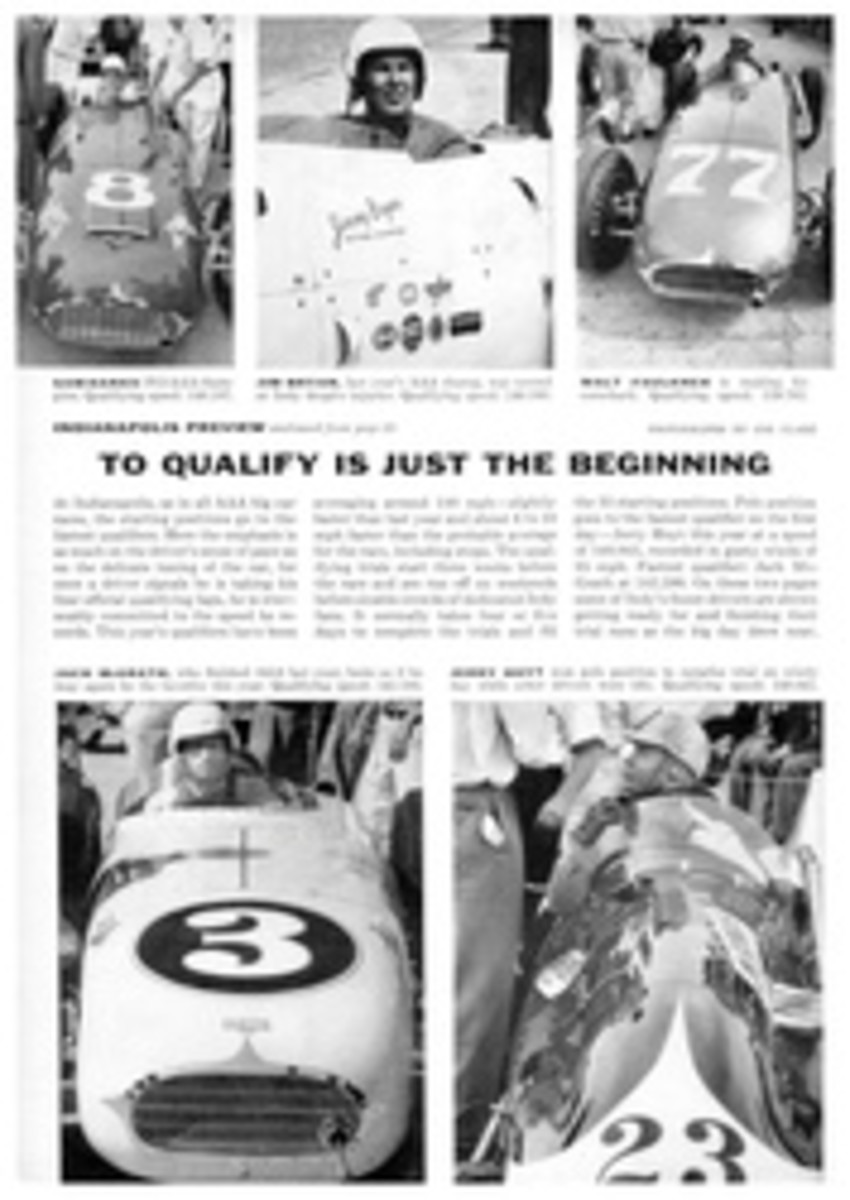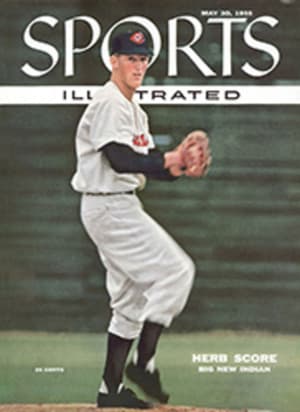
WHEREIN SI'S BOATING EXPERT TAKES A RIDE IN A NEW FISHING CRUISER AND MAKES SOME DISCOVERIES ABOUT STEEL
I was quite surprised when I first looked at the plans of Sport Fishing Boats Co.'s 24-foot Striker and saw that she was made of steel. Ordinarily, steel construction in a boat so small would make her too heavy for good performance. If, on the other hand, her plating were too thin, it might buckle and rust through.
It was with some reservation, therefore, that I traveled to Freeport, Long Island to try out Striker. However, I wanted to test her for two reasons. From her plans I knew she would be an interesting-looking boat. Secondly I know her designer, Philip Bolger of Gloucester, Mass., to be one of the finest architects of small sport-fishing boats, and I felt if Bolger had chosen steel, he must have had good reasons. Striker might be something special.
At rest off the dock at Freeport she was even more appealing than her plans had suggested. She had a perky sheer extending from a high bow to a low fish-handling stern, a nicely blending trunk cabin and a rakish flying bridge. Her steel construction wasn't immediately apparent, since the top-sides were smooth with welding joints almost indiscernible and no rust anywhere although she had been in water and uncovered for four months.
Upon stepping aboard, the practical features of Striker's design were apparent. The roomy, self-bailing cockpit was ideal for fishing, with low freeboard to prevent interference with the rod and to make it easy to pull a big fish aboard. Rod holders were built into the gunwales. The fishing chair was located in the after part of the cockpit so that the coaming on all sides was just the right distance for foot bracing. The steel mast doubled as an air exhaust from the engine room and as a king post for landing a heavy fish.
The cabin was simple—designed less for cruising than for shelter. There were, however, two full-length berths, a head, a minimum galley and full headroom in the afterpart.
A glimpse into the engine room beneath the flying bridge deck revealed plenty of room and such quality features as Monel gas tanks and rubber mounting. I was most interested, however, in seeing the deep bilge formed by the hollow box keel—an unusual design feature sure to affect performance.
At the dock Striker was passing her examination with flying colors. But her performance under way would be the acid test. Anxious to see how she would behave, we—Herb Phillips, co-owner of Sports Fishing Boats, and I—eased out of her slip.
In gear at idling speed, she moved ahead at a perfect pace for dead-slow trolling, her broad stern and heavy steel plates holding her speed down in spite of the power of her 155 hp Nordberg engine. Her maneuverability was amazing. With full rudder she turned almost in her own length.
Standing on her flying bridge as we headed toward more open water, it was hard for me to realize I was in a boat as small as 24 feet. The five-foot-long bridge deck was a couple of feet above the water line, affording 360° visibility and making it easy to spot fish or shoals. The bulwarks around the forward deck, besides offering protection against slipping overboard while handling the anchor, heightened my impression of being on a larger boat. She had a feeling of weight and solidity not unlike a work boat dressed up to be a yacht. But the most pertinent question was still unanswered: Could this bulk become alive when urged?
We were now in open water and gave her full power. She didn't leap ahead, but rose up gradually, gained speed steadily until we were doing over 20 mph. Stripped of all gear, Striker has reached 27 mph. Far more important than her stripped speed, however, was the fact that now, loaded with gear, we were planing high and easy.
At this speed she banked nicely on turns and maneuvered adequately. The steering mechanism struck me as a bit stiff. However, what she lacked in quick maneuvering she made up for in ease of holding a course or a turn. Again, the feeling of a bigger boat was the most notable characteristic, and this was emphasized by her steadiness in the short, steep waves.
There wasn't enough real sea, however, to test her fully, so I tried turning hard at full speed and driving into her own quite sizable quarter-wave. Striker scarcely noticed it. Her deep forefoot sliced into the waves, and she rose imperceptibly, her flaring bows throwing spray far to the side, her built-in spray rails forcing down the free water effectively. Once over the sea, she came down softly, with no pounding. Her weight kept the motion slow and easy—again like a boat of larger dimensions. I had seen enough then to know that Striker was a fine rough-water boat.
Satisfied with her high-speed performance, I throttled the engine back to cruising speed. She eased off to about 17 mph, and was just as smooth in motion and free from vibration as she had been at top speed. Next we tried backing and I was surprised to see she steered to starboard and port with almost equal effectiveness.
When we got ashore we drove over to the building shop at 2655 Merrick Road, Bellmore, Long Island, to get a look at her construction and to determine, if possible, the reason for her surprising buoyancy and ability to put on speed. The hulls were being built upside down, affording a perfect look at her most unusual design feature—the hollow box keel extending most of her length. It was finely faired both forward and aft, but of sufficient depth and width to give a lot of buoyancy. This long thin "hull beneath a hull" causes some slight resistance. However, the lift it imparts makes the hull proper float no lower than if she were more lightly constructed, and this extra buoyancy allows her to reach adequate speeds. Furthermore, the box keel gives protection to the propeller and rudder.
SUMMA CUM LAUDE
The complete absence of rust I had noticed in the demonstrator was explained by the fact that the entire hull is zinc-metalized and then painted with several coats of the best anti-corrosive vinyl paint.
In price, Striker is right in line with good wooden boats—from $4,250 with a 95 hp Nordberg engine and simple cabin arrangement to $5,392 with a 155 hp Nordberg and more deluxe cabin plan. Twin screw power is available with prices up to $6,642, but in view of her maneuverability and the reliability of modern marine engines it doesn't seem worth the difference.
Anyone with a prejudice against-steel for small-boat construction might well change his mind after seeing Striker. True, her speed isn't dazzling, and a slightly smoother first appearance is possible with wood or glass plastic construction; but Striker gets a good passing grade on both these counts and is summa cum laude on many others.
PHOTO
ALL-STEEL STRIKER has every accessory a small-boat fisherman would want and takes the sea more like a 40-foot Coast Guard picket boat than a 24-foot troller.

